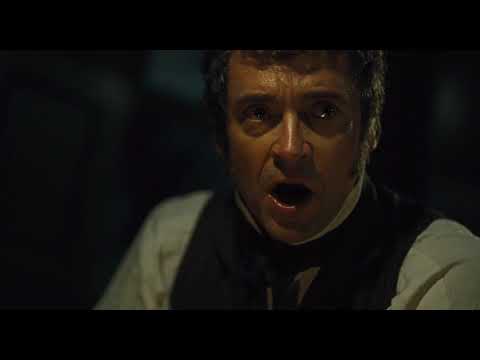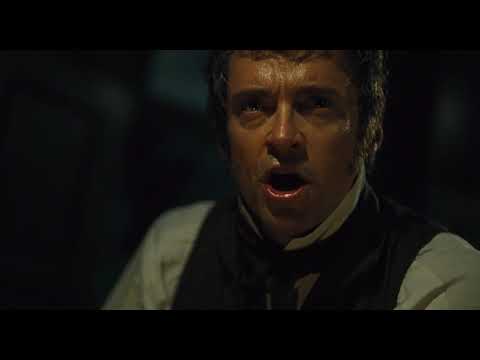Who Am I? Lyrics
Who Am I?
[VALJEAN]He thought that man was me
Without a second glance!
That stranger he has found
This man could be my chance!
Why should I save his hide?
Why should I right this wrong
When I have come so far
And struggled for so long?
If I speak, I am condemned.
If I stay silent, I am damned!
I am the master of hundreds of workers.
They all look to me.
How can I abandon them?
How would they live
If I am not free?
If I speak, they are condemned.
If I stay silent, I am damned!
Who am I?
Can I condemn this man to slavery
Pretend I do not feel his agony
This innocent who wears my face
Who goes to judgement in my place
Who am I?
Can I conceal myself for evermore?
Pretend I'm not the man I was before?
And must my name until I die
Be no more than an alibi?
Must I lie?
How can I ever face my fellow men?
How can I ever face myself again?
My soul belongs to God, I know
I made that bargain long ago
He gave me hope when hope was gone
He gave me strength to journey on
[He appears in front of the court]
Who am I? Who am I?
I'm Jean Valjean!
[He unbuttons his shirt to reveal the number tattooed to his chest]
And so Javert, you see it's true
This man bears no more guilt than you!
Who am I?
24601!
Song Overview

“Who Am I?” is the thunder-clap moment when Jean Valjean asks the oldest existential riddle in the book and answers with his prison number. On the 1987 Les Misérables Broadway recording, Colm Wilkinson’s tenor burns with moral jet fuel, while an anxious orchestra circles like a courtroom clock. The track lasts barely three minutes, yet it’s the fulcrum on which the entire epic tilts: will Valjean sacrifice a stranger for his own freedom, or stake his future on a truth that could shatter it? Valjean picks truth—and theatre audiences still erupt in goosebumps.
Song Credits
- Artist: Original Broadway Cast of Les Misérables (feat. Colm Wilkinson as Jean Valjean)
- Album: Les Misérables – Original Broadway Cast Recording
- Producers: Alain Boublil & Claude-Michel Schönberg
- Composers: Claude-Michel Schönberg; English verses adapted by Herbert Kretzmer; original French text by Alain Boublil & Jean-Marc Natel
- Release Date: March 1987
- Genre: Musical theatre power-ballad
- Length: 3 min 4 sec
- Mood: Conflicted, soaring, redemptive
- Label: Geffen Records
- Instruments: Full pit orchestra—tremolo strings, timpani rumbles, brass fanfares, and that lone snare tap mimicking a judge’s gavel
- Copyright © 1987 Alain Boublil Music Ltd. / Claude-Michel Schönberg
Song Meaning and Annotations

Structurally, “Who Am I?” is a legal brief set to melody. It begins with sotto-voce self-debate—Valjean mulling whether to let an innocent man (Champmathieu) be mistaken for him—then surges into a chest-thumping confession. The orchestration mirrors that debate: brooding minor-key strings for doubt, triumphant brass for decision. The song’s central plank is moral identity: freedom earned by lies versus dignity reclaimed by honesty.
Historically, this scene nods to 19th-century French penal culture, where ex-convicts carried yellow passports branding them for life. Valjean’s internal wrestling—“If I stay silent, I am damned”—captures a society that pardons paperwork faster than people. Musically, the piece marries operetta grandeur with Broadway urgency; think Puccini sprinting through Times Square.
“If I speak, I am condemned / If I stay silent, I am damned.”
Those paired lines slice like a guillotine, their balanced meter underscoring a no-win scenario. Yet the climax flips despair into purpose when Valjean belts, “I’m Jean Valjean,” then fires off his number—24601—like a liberation cannon. The tattoo, once a shackle, becomes a banner.
Verse Breakdown
Internal Monologue
Muted strings and hesitant woodwinds create the hush of an empty courtroom. Each rhetorical question doubles as a beat of conscience.
First Refrain
Timpani thunder hints at looming judgment; Valjean sees workers who rely on him—a new life colliding with old sins.
Bridge – “Who Am I?” motif
Key modulates upward, signaling rising resolve. The lyrical repetition mirrors a hammer forging steel.
Courtroom Confession
Orchestra blasts to fortissimo as Valjean reveals his identity; the snare roll mimics a crowd’s collective inhale before verdict.
Similar Songs

- “Soliloquy” – Gordon MacRae (Carousel)
Both numbers feature protagonists pacing a moral crossroads. Billy Bigelow envisions fatherhood; Valjean wrestles with culpability. Each piece elongates thought processes into soaring melodic arcs, though Rodgers & Hammerstein lean on Americana while Boublil & Schönberg channel French Romantic drama. - “Defying Gravity” – Idina Menzel (Wicked)
Elphaba’s sky-ward rebellion mirrors Valjean’s ethical ascent; both songs employ swelling orchestration and octave-vaulting choruses to mark irrevocable choices. Where Valjean embraces law, Elphaba rejects it—opposite directions, identical liberation rush. - “Gethsemane (I Only Want to Say)” – Ted Neeley (Jesus Christ Superstar)
Another late-night wrestle with destiny. Jesus questions divine plans; Valjean questions civic duty. Andrew Lloyd Webber’s rock-tenor fireworks parallel Schönberg’s symphonic build, turning introspection into arena-size drama.
Questions and Answers

- Does the phrase “24601” hold symbolic weight beyond a prisoner number?
- Fans note that 24-6-01 can echo biblical chapter-verse notation, hinting at redemption themes. Though unintended by writers, it underscores Valjean’s scriptural moral code.
- Why does the orchestration switch keys mid-song?
- The modulation mirrors Valjean’s mindset shifting from uncertainty to certainty, giving the audience a visceral sense of turning a moral corner.
- Is Champmathieu historically based?
- Victor Hugo invented him, but real French courts often mis-identified vagrants—so the episode dramatizes systemic flaws rather than a single true story.
- How many reprises of “Who Am I?” exist in the musical?
- Just one—during “Epilogue”—where Valjean asks the question again while dying, closing his arc where it began but at peace.
- Why does Hugh Jackman sing it lower in the film?
- Jackman’s baritone sits lower than Wilkinson’s tenor; the transposition preserves vocal comfort while retaining dramatic tension.
Fan and Media Reactions
Even among the musical’s parade of show-stoppers, “Who Am I?” wins special reverence:
“The moment Valjean shouts his number, I get voltage up my spine every time.” – @BarricadeBaritone, YouTube
“Colm Wilkinson’s sustained G-sharp is a mini-sermon.” – Playbill podcast
“Best internal monologue ever turned into melody.” – Musical-theatre Reddit thread
“Hugh Jackman’s film version trades polish for raw breath, and it works.” – Variety review
“Three minutes of ethical anxiety—Broadway’s shortest, loudest philosophy lecture.” – @StageLeftPhilosopher, Twitter
